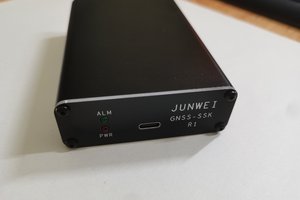Description
By using an SDR receiver it is possible to capture, demodulate and decode the NFC signal between the card and the reader.
I do not have as an objective to explain the NFC norms or modulation techniques, there is a multitude of documentation accessible through Google, I will describe as simply as possible the method that i have used to implement this software.
Currently, only detection and decoding for NFC-A modulation has been implemented.
Signal processing
The first step is receive the 13.56MHz signal and demodulate to get the baseband ASK stream, for this purpose any SDR device capable of tuning this frequency can be used, i have the fantastic and cheap AirSpy Mini capable of tuning from 27Mhz to 1700Mhz. (https://airspy.com/airspy-mini/)
However, it is not possible to tune 13.56Mhz with this receiver, instead i use the second harmonic at 27.12Mhz or third at 40.68Mhz with good results.
Let's see a capture of the signal received in baseband (after I/Q to magnitude transform) for the REQA command and its response:
As can be seen, it is a signal modulated in 100% ASK that corresponds to the REQA 26h command of the NFC specifications, the response of the card uses something called load modulation that manifests as a series of pulses on the main signal after the command.
Demodulation
Due to the digital nature of the signal i used a technique called symbol correlation which is equivalent to carrying out the convolution of the signal with the shape of each symbol to be detected. Without going into details, the NFC-A modulation is based on 6 patterns: Y, X and Z for reader commands and E, D, F for card responses (see NFC specifications for complete description).
Demodulation is performed by calculating the correlation for these patterns and detecting when the maximum approximation to each of them occurs. Below is the correlation functions for the two basic symbols S0, S1 used to calculate all the others. Last value is function SD represent the absolute difference between S0 and S1 necessary to detect the timmings.
The response of the card is much weaker but enough to allow its detection using the same technique for patterns E, D, F, here it is shown in better scale.
Symbol detection
For the detection of each symbol the value of each correlation is evaluated in the appropriate instants according to the synchronization. The number of samples per symbol is defined as N and must be calculated before starting the process knowing the sampling frequency (fc) and symbol duration.
The correlation process begins with the calculation of the S0 and S1 values that represent the basic symbols subsequently used to discriminate between the NFC patterns X, Y, Z, E, D and F, as shown below.
This results in a flow of patterns X, Y, Z, E, D, F that are subsequently interpreted by a state machine in accordance with the specifications of ISO 14443-3 to obtain a byte stream that can be easily processed.
Bitrate discrimination
So, we have seen how demodulation is performed, but how does this apply when there are different speeds? Well, since we do not know in advance the transmission speed it is necessary to apply the same process for all possible speeds through a bank of correlators. Really only is necessary to do it for the first symbol of each frame, once the bitrate is known the rest are decoded using that speed.
BPSK modulation
ASK modulation is relatively simple and easy to implement, however the specification ISO 14443 defines the use of BPSK for card responses when the speed is 212Kbps or higher.
For BPSK demodulation a reference signal is required to detect the phase changes (carrier recovery), since that is complex i have chosen to implement it by multiplying each symbol by the preceding one, so that it is possible to determine the value of symbols through the changes produced between then.
Below you can see the signal modulated in BPSK for a response frame at 424Kbps,...
Read more » Jose Vicente Campos
Jose Vicente Campos







 Jesse R
Jesse R
 jr9910
jr9910
 Giorgio Rutigliano
Giorgio Rutigliano
 Scott Bragg
Scott Bragg